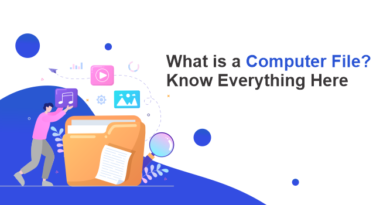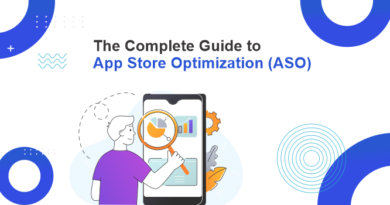10 best Machine Learning Frameworks
Machine learning is growing enormously and the hottest trending field in the past 6 years. According to the report, there will be a shortage of skillful machine learning engineers causing friction as demand increases faster than supply. This is what makes it even more important for organizations to gain a clearer understanding of the various machine learning frameworks available today to stay ahead of the pack in the competition.
Machine learning is the new buzzword in the IT world. Capitalizing on it can make your website more engaging and responsive to users’ requests. Machine learning frameworks are now easy-to-install packages that help you create neural networks or other machine learning models to improve your site’s functionality. We’ll discuss what machine learning and the best ML frameworks are:
What Is Machine Learning?
Machine learning is a method for automatically recognizing patterns in data. Machine learning algorithms utilize large amounts of data, statistical analysis, and human judgment to guess what successful patterns might be. They’re trained on huge libraries of information to identify relevant features and select accurate models for subsequent experiments. It’s an incredibly complex topic with many moving elements. So often we hear technologists use phrases like “it extracts unseen features from texts” or “it automatically creates templates for you” without really outlining what those features are or how they work.
Machine learning as a sub-domain of artificial intelligence helps businesses to examine data, learn, and adapt, then make decisions accordingly. The majority of the frameworks are either general interfaces or tools that are built on top of an interface to make it easy for developers to construct models with ease. However, it will still require you to have the ability to understand the logic of how the Machine Learning and Deep Learning platforms are performing.
Types of Machine Learning Types
There are 3 types of Machine learning
1.Supervised
Supervised machine learning is essentially a procedure of examining and sorting through data based on past inputs. The email platforms we use every day, such as Gmail and Yahoo use machine learning algorithms to detect spam.
2.Unsupervised
Unsupervised machine learning is a branch of machine learning that does not rely on labeled data. Instead, the AI learns to recognize patterns by identifying similarities between different data points. For example, The ML techniques at Facebook are designed to automatically organize and sort information, such as by detecting faces and finding the appropriate profile.
3.Reinforcement
In reinforcement learning, the AI faces a game-like situation. It is trained to make a sequence of decisions in an uncertain, potentially complex environment. The computer is programmed with your goals in mind and uses the information it gathers from its environment in an attempt to achieve them.
10 Machine Learning Frameworks
ML frameworks are tools for IT system designers to understand and design ML models. Machine Learning speeds up the process of finding the ‘good’ answer to a question. Here are ten Machine Learning tools that developers can use to implement AI into their applications, as well as a short description of how each tool works:
1.TensorFlow
Google’s TensorFlow, which is open-source, is one of the best libraries (in the sense of being a collection of resources) that contains Google’s cutting-edge machine learning technology. TensorFlow is a machine-learning framework designed to make machine learning more accessible.
Tensorflow is an open-source software library of TensorFlow-1 software developed by Google for numerical integration and training of neural networks. Tensorflow allows developers to rapidly develop and optimize networks by carrying out tens of thousands of small computations in parallel on large datasets.
Developers can run the framework on CPUs, GPUs, and other types of hardware. TensorFlow can be used in two ways: either through script tags (in web browsers) or via installation (via NPM). It can assist in human pose estimation.
2.Sci-kit learn
Sci-Kit Learn is an open-source Python library that supports machine learning. It provides implementations of classic classification, regression, clustering, and dimensionality reduction algorithms and adds support for popular machine learning tasks such as classification, regression, clustering, and dimension.
Sci-kit learns is an open-source machine learning library for Python which provides a free platform and detailed documentation. It can also use pre-set parameters for algorithms when they’re being used. The framework is preferred for unsupervised and administrative calculations.
3.Apache MXNet
Amazon is using MXNet for its AWS Machine Learning and Prediction services. The platform was built to use the cloud for processing. If you need to scale across multiple GPUs and servers, it will be easy.
Moreover, MXNet can be used in both imperative and declarative ways, and it has multiple language APIs, including Python, JavaScript, Julia, C++, Scala, Perl, and Go. The ML framework has received support from a variety of respected organizations, including Microsoft and Intel, as well as many research institutions like the University of Washington and MIT.
4.Apache mahout
Apache Mahout is an open-source machine learning engine implemented in the Apache HTTP Server Project. It provides an API allowing developers to develop and deploy cognitive applications with powerful non-JAQ scripts. Mahout can be used for fast, distributed, interactive machine learning with state-of-the-art applications and functionality such as predictive maintenance, voice search, front-end web browsing, and more.
To acquire the most out of Mahout’s machine learning algorithms, it helps to first learn how to code them efficiently.
Mahout’s strength is that it can handle very large data sets. However, some of its algorithms are missing and it needs extensive documentation, which can make it difficult to use.
5.Shogun
If your company uses the C++ programming language, Shogun is another potential framework to use. It’s free to use this platform for designing algorithms and data structures, primarily for ML problems in education and research.
Gunnar Raetsch and Soeren Sonnenburg developed Shogun in 1999 for rapid prototyping of various classifiers and algorithmic structures. Shogun can be connected with other tools like LibLinear, LibSVM, SVMLight, LibOCAS, and more.
The design objective of the “Shogun” algorithm is to rapidly develop an understanding of a set of input examples. This leads to three goals:
- Generating adaptive models that minimize the error between said examples
- Converging towards a best (minimal) model
- Training the model with additional examples
Furthermore, Shogun is also compatible with other programming languages, including R, Python, Java, C++, and Octave.
6.Pytorch or torch
PyTorch is a Python framework for Machine Learning (ML) that was originally designed to mimic the functionality of Torch, which used the Lua programming language. The platform is an artificial intelligence software library developed by Facebook, IBM, Idiap Research Institute, and Yandex.
Torch enables you to design neural networks using the Autograd Module and makes it easy to use natural language processing. Open-source refers to the ability to view and edit the source code of the software. Deep Learning is the study of artificial neural networks with many layers. It’s about making software that works similarly to the brain.
7.H2o
H2O is a popular open-source Machine Learning framework. Businesses use Artificial Intelligence to help them make decisions because data is the backbone of all the decisions they make.
The platform can be used for many purposes, including fraud and risk management, insurance analytics, predictive modeling for healthcare, advertising, and marketing data analysis.
8.Microsoft cognitive toolkit
Microsoft cognitive toolkit is an open-source project that contains machine learning models and algorithms designed to help improve your life. The goal of cntk is to make it easier for people to adopt diverse professions. It can be used to train machine learning models to make better decisions on their behalf, or to do things like automatically sign up for early access to free software or crypto assets.
CNTK is a framework for building complex neural networks. It has several tools including Recurrent Networks, Feedforward Deep Neural Networks, and Convolutional Neural Networks.
9.Apple’s core ml
Core ML provides machine learning models for image, sound, and text processing that can be used in iOS apps. There are convenient functions that even novice developers can use.
The ML platform includes image classification, sentence classification, natural language processing, barcode detection, Gameplay Kit, and object tracking. One advantage of using this platform is that it can leverage CPUs and GPUs for high performance. This makes the app more reliable, even offline.
10.Google Cloud ML engine
Cloud ML Engine is a machine learning service that offers on-demand processing of models. This can help to cost-effectively build, train, and deploy models at scale across various industries.
The Machine Learning framework uses the optimum choice of models for data operations and allows you to build state-of-the-art models. For example, predictive services can be used to identify potential problems and provide recommendations to customers in real-time, as well as automatically detect the location of certain types of clouds.
Conclusion
I hope that this article gives you an understanding of the different available ML frameworks so that you can choose the right framework for your next project.
For all but the simplest AI problems, you’ll need to choose from dozens of frameworks. Business factors will also influence your choices, such as who owns the data and whether you’re building an internal product or a client-facing service. While there are several free Machine Learning frameworks available, we have prepared a list of ML tools that are free to use. Our mobile app experts at Cubix are ready to offer more insights and support for Machine Learning frameworks. So, share yours.



